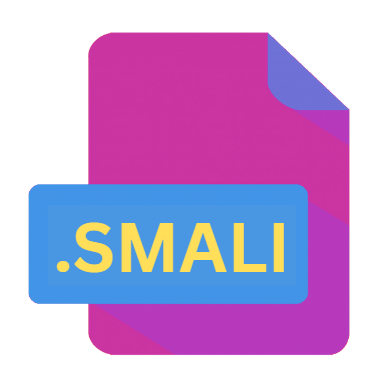.SMALI File Extension

Android Smali Assembly Language File
| Developer | |
| Popularity | |
| Category | Developer Files |
| Format | .SMALI |
| Cross Platform | Update Soon |
What is an SMALI file?
.SMALI files, short for Android Smali Assembly Language files, are a crucial component of Android application development.
These files contain human-readable assembly-like code that serves as the intermediate representation of Android application bytecode.
Essentially, .SMALI files provide developers with a way to understand and modify the behavior of Android applications at a low level.
More Information.
The need for Smali arose from the limitations of traditional disassembly tools in understanding Dalvik bytecode.
Originally developed by JesusFreke, Smali aimed to provide developers with a human-readable alternative to Dalvik bytecode, enabling easier debugging, reverse engineering, and modification of Android applications.
Origin Of This File.
The concept of Smali traces its roots back to the early days of Android development. As Android’s popularity surged, developers sought ways to analyze and modify application bytecode efficiently.
Smali emerged as a solution, providing a readable representation of Dalvik bytecode, the original bytecode format used by Android applications.
File Structure Technical Specification.
.SMALI files adhere to a specific syntax that resembles assembly language, making it relatively easy for developers to comprehend and manipulate.
Each .SMALI file corresponds to a specific class within an Android application and contains instructions, method definitions, and other relevant metadata.
The structure of a .SMALI file typically includes:
- Header Information: Specifies the class name, access modifiers, and superclass.
- Method Definitions: Contains the implementation details of methods within the class, including parameter types, return types, and bytecode instructions.
- Instruction Set: Consists of Dalvik bytecode instructions represented in human-readable format, facilitating code analysis and modification.
- Metadata: Includes additional information such as annotations, debug information, and variable declarations.
How to Convert the File?
Converting .SMALI files to other formats or vice versa is not a common practice due to their specialized nature.
Developers may occasionally need to convert .SMALI files to Dalvik bytecode or vice versa for compatibility or optimization purposes.
To convert .SMALI files to Dalvik bytecode, developers can use tools like smali/baksmali, which provide command-line utilities for assembling and disassembling Android application bytecode.
These tools allow developers to convert .SMALI files to Dalvik bytecode (.dex) and vice versa, facilitating interoperability and analysis.
Advantages And Disadvantages.
Advantages:
- Readability: .SMALI files offer a human-readable representation of Android application bytecode, making it easier for developers to understand and modify application behavior.
- Flexibility: Developers can manipulate .SMALI files to customize application functionality, bypass security measures, or optimize performance.
- Debugging: .SMALI files aid in the debugging process by providing insights into the inner workings of Android applications, enabling developers to identify and resolve issues more effectively.
Disadvantages:
- Complexity: Understanding and working with .SMALI files requires familiarity with assembly language concepts and Android application architecture, which can be daunting for inexperienced developers.
- Maintenance Overhead: Modifying .SMALI files directly may introduce compatibility issues with future Android versions or third-party libraries, necessitating ongoing maintenance and updates.
- Legal Concerns: Altering .SMALI files for unauthorized purposes, such as circumventing security measures or infringing on intellectual property rights, may raise legal concerns and ethical considerations.
How to Open SMALI?
Open In Windows
- Utilize text editors such as Notepad++, Sublime Text, or Visual Studio Code with Smali syntax highlighting extensions installed.
- Alternatively, use specialized Android development tools like Android Studio, which provide built-in support for viewing and modifying .SMALI files within the context of Android projects.
Open In Linux
- Leverage text editors such as Vim, Emacs, or VS Code with Smali syntax highlighting extensions installed.
- Command-line tools like smali/baksmali are compatible with Linux distributions, enabling advanced manipulation of .SMALI files directly from the terminal.
Open In MAC
- Use text editors like Sublime Text, Atom, or Visual Studio Code with Smali syntax highlighting plugins enabled.
- Similar to Windows, Android Studio on macOS offers comprehensive support for .SMALI files, allowing developers to work with them seamlessly.













